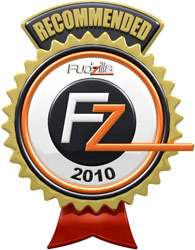Today we'll take a look at the GTX 460, a card based on the new GF104 graphics chip, rather than the GF100 that was featured on the current crop of available Fermi cards. GF104 is the second generation Fermi, which should save Nvidia's hide and help it reclaim the graphics throne. That Nvidia is serious in its intentions is further backed by the fact that all Nvidia's partners have already ordered the GF104 and already have their specially designed cards in their respective offers. All that's left is hope that GTX 460 will sell like ice-cream in the summer time, but we should know that soon enough.
Judging by what we've heard, the GF104 should be a much better overclocker than the GF100, but naturally - we won't take anyone's word for it. Nvidia initially planned to launch the GTX 460 by the end of June, but the company pushed it back to 12th of July. The cards are already available in pretty much any flavor you prefer – reference and custom PCB designed, reference and custom cooled, and reference clocked and overclocked cards are all there for the taking. There are also Geforce GTX 460 cards based on the same GF104 chip, with the difference in memory and bandwidth. The core runs at 675MHz, shaders (CUDA cores) at 1350MHz and the memory at 3600MHz (effectively).
We’ll refer to the GTX 460 1024MB GDDR5 as the faster one, since it’s memory bus is a 256-bit one, whereas the “slower” card comes with 768MB of GDDR5 memory on a 192-bit bus. The memory subsystem on the GTX 460 768MB card is made of three 64-bit memory controllers (192-bit), whereas the GTX 460 1024MB comes with four 64-bit memory controllers (256-bit).
The GTX 460’s graphics processor comes with 336 CUDA cores and 56 texture units at its disposal. Now, one SM (streaming multiprocessor x8) comes with 48 CUDA cores, whereas the GF100’s SM chips packed 32. The GTX 460 has two warp schedulers and four dispatch units per SM. Warp size is 32 threads, like GF100. GF104 also supports 48 warps per/SM similar to GF100. Nvidia can issue a mix of instructions in GF104. Two instructions can be dispatched per warp (versus one in GF100), for a total of four instructions dispatched per scheduler clock (which runs at ½ speed of processor clock) per SM.
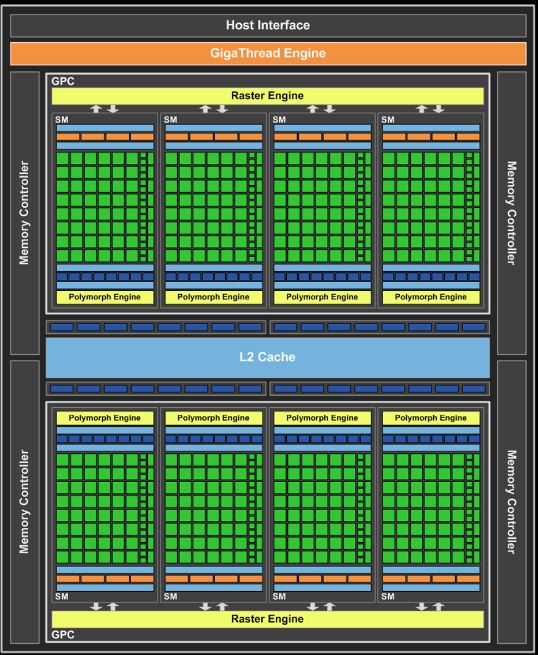
The GTX 460 has seven execution clusters running on the core clock. Up to four instructions can be issued to any of the seven clusters provided that cluster is not already busy processing an earlier warp. FP and INT datapaths also have separate dispatch resources to support, for example, issuing three FP plus one INT instruction per scheduler clock.
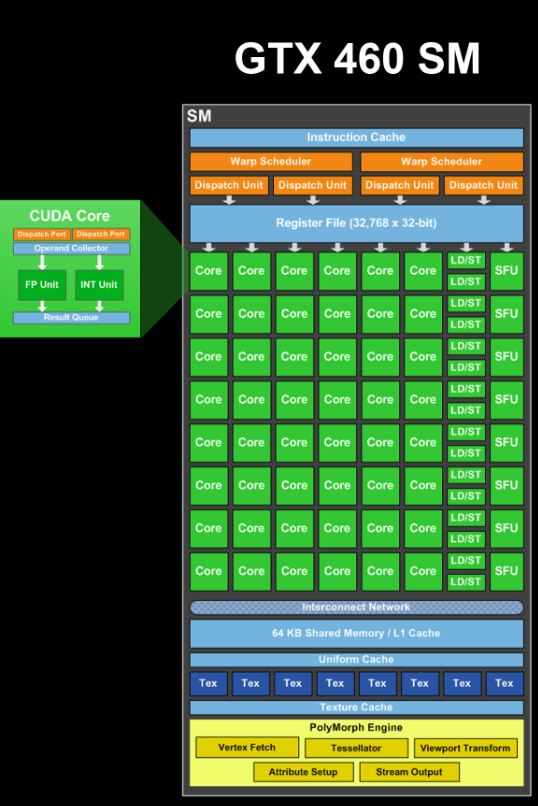
GTX 460 doesn’t have standard HDMI, but rather mini-HDMI. However, Nvidia madu sure to include advanced audio support for HDMI, including bitstreaming support for Dolby True HD and DTS-HD Master audio, all via HDMI.
Up until now, the GTX 465 was the only sub-€300 Nvidia’s DirectX 11 card (available for about €260), but Nvidia’s new offer will be much more appealing to those with less than mile-deep pockets. In fact, the card will be available from €200 for the 768MB model or €230 for the 1024MB one.
Nvidia doesn’t plan on stopping there though as it has two other affordable chips in the plans – GF106 and GF108, which will be the final DirectX 11 touch for the back-to-school period. Notebook makers are also excited about GF104 and its offshoots, as the chip has 25% lower TDP compared to the GF100 and together with Optimus, GF104 could be a pretty decent chip for mainstream and performance mobile markets.
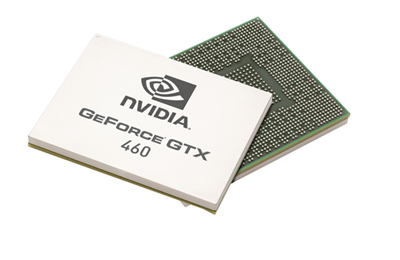
Many partners already have custom-designed and overclocked cards, with some partners like Gainward offering as many as 4 different GTX 460 flavors. What follows are 13 cards from already famous Nvidia partners, with one perhaps familiar face missing - BFG. You might recall that the company has halted its Nvidia business but we can't help but wonder whether they'll jump back on Nvidia trains if Nvidia's future offerings prove they're better than the GF100.
Asus
ENGTX460_DirectCU_TOP_2DI_768MD5_45Angel
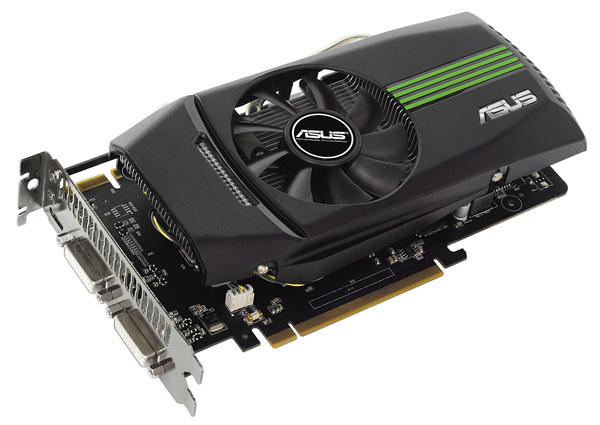
ENGTX460-2DI-768MD5_3D_L
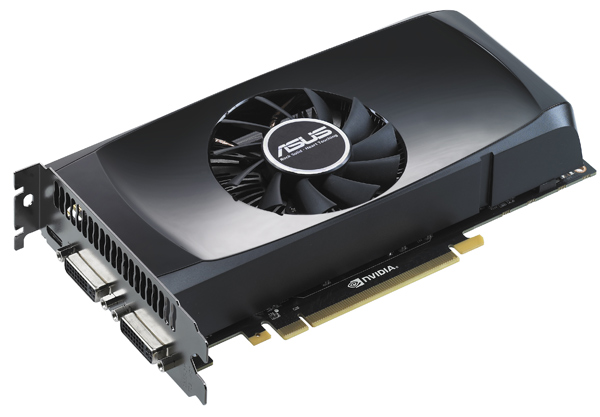
Axle
AX-GTX460/768D5P2D2I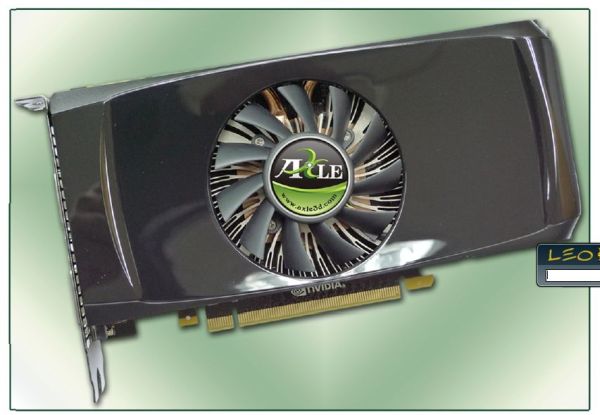
Elitegroup
NBGTX460-1GPI-F
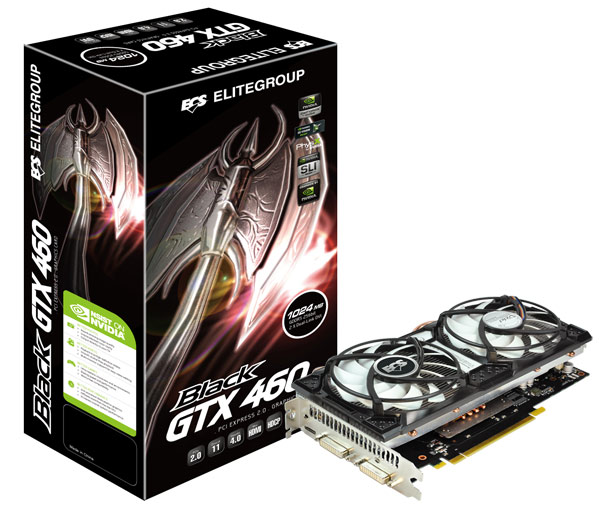
768-P3-1360-TR
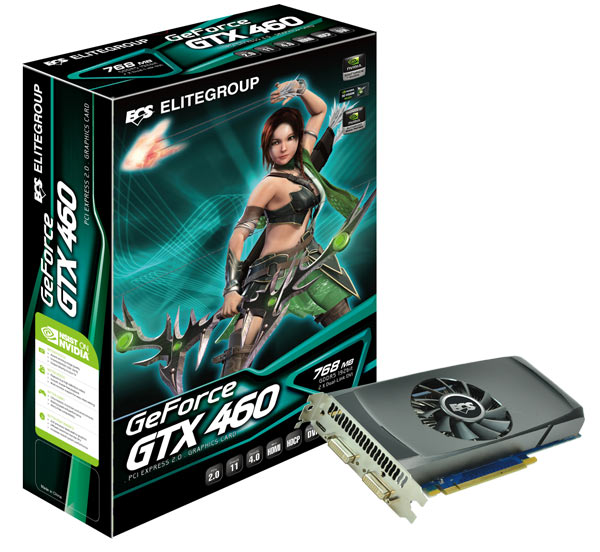
EVGA
01G-P3-1371-TR
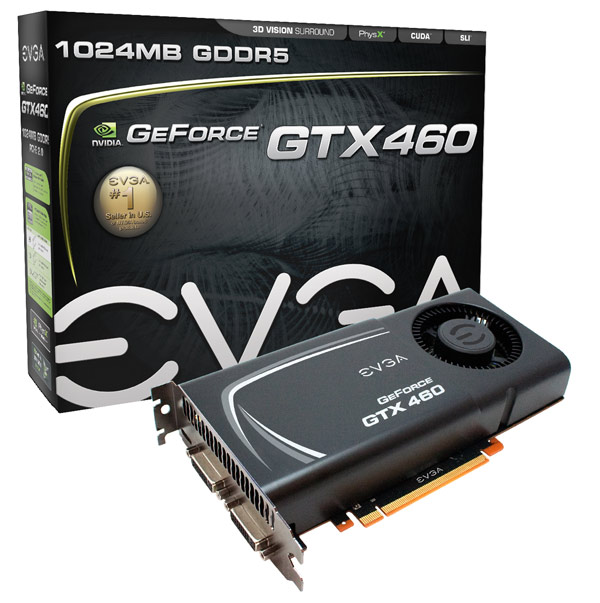
768-P3-1360-TR
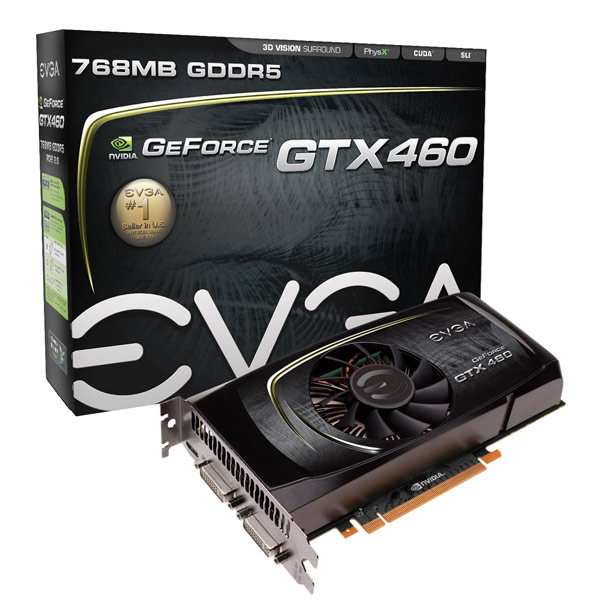
Gainward
GW1145_GTX460_HDD_768MB
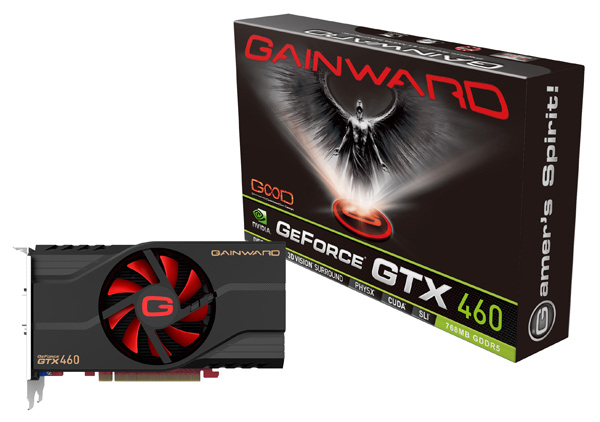
GW1176_GTX460 GLH_HDD_768MB
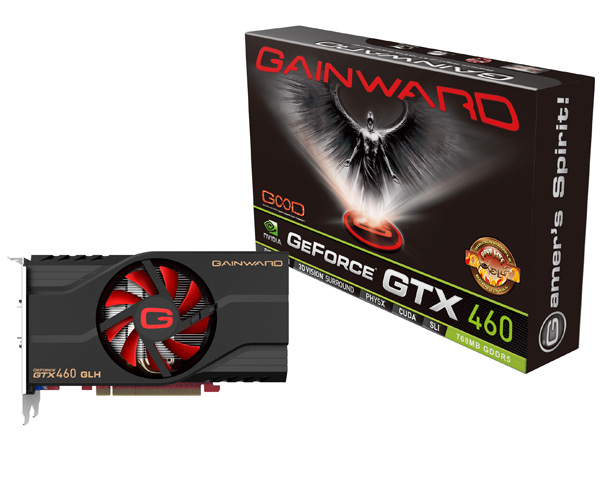
GW1190_GTX460 GS_HDD_1024MB
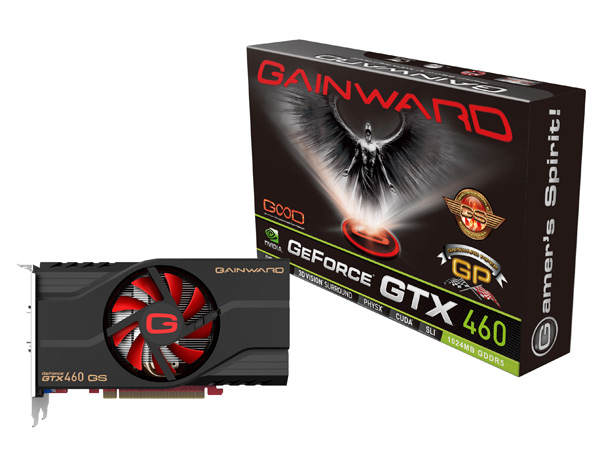
GW1213_GTX460 GLH_HDD_1024MB
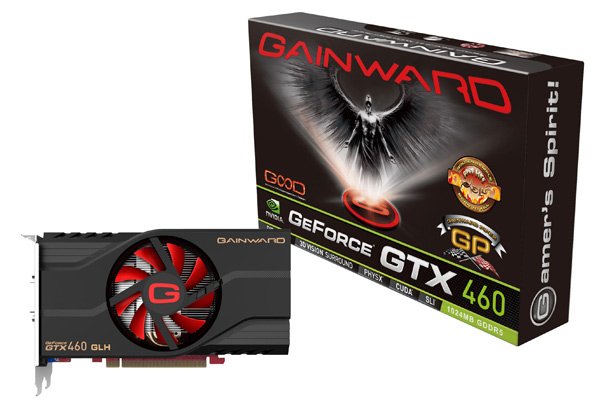
Galaxy
GALAXY-GTX460_768M-GC
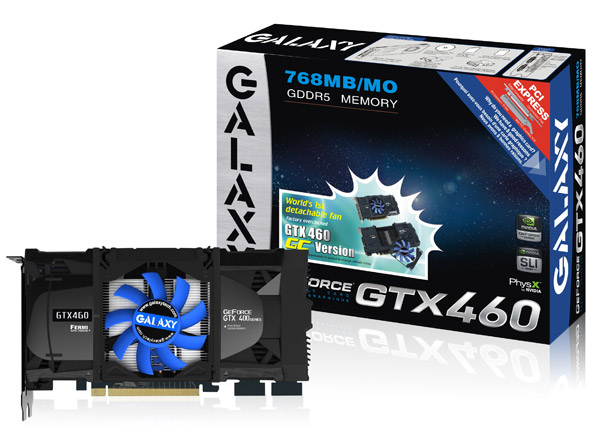
GALAXY-GTX460_768MB_SUPER-OC
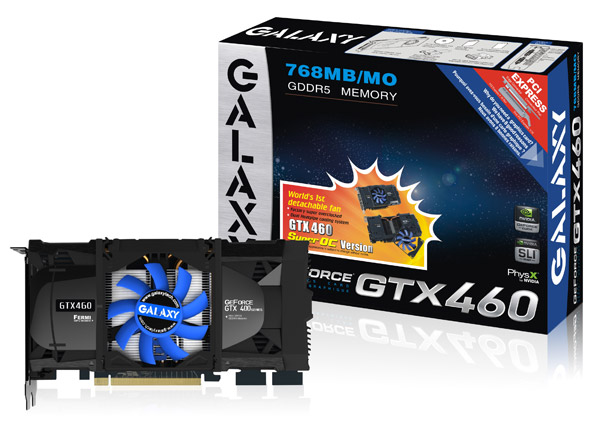
GALAXY-GTX460_1GB-GC
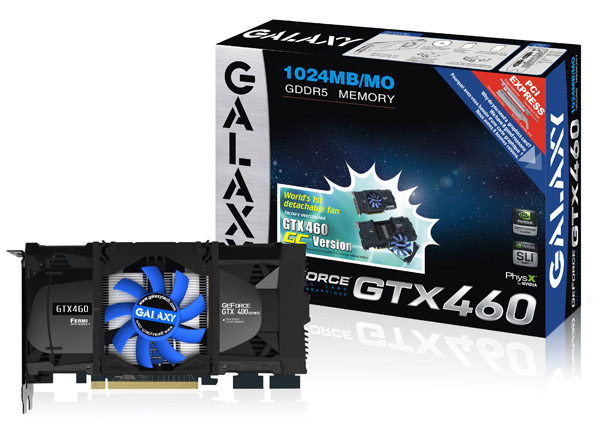
GALAXY-GTX460_1GB_SUPER-OC
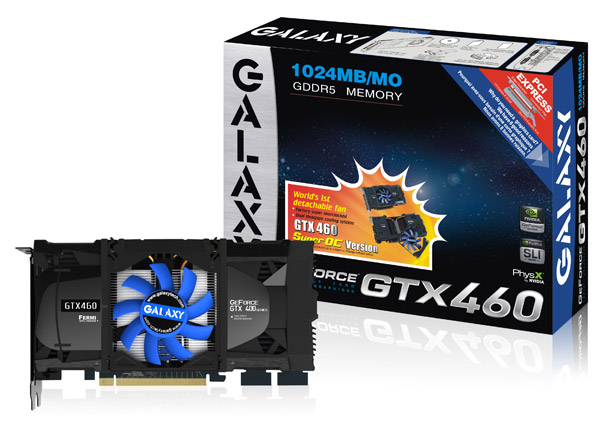
Gigabyte
GV-N460OC-768
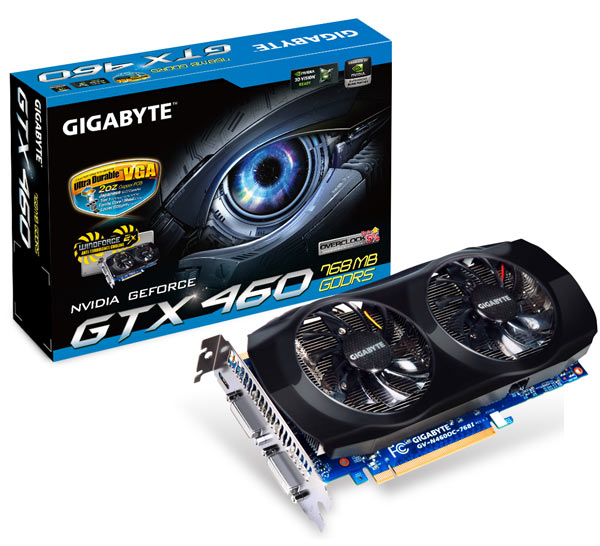
GV-N460OC-1G
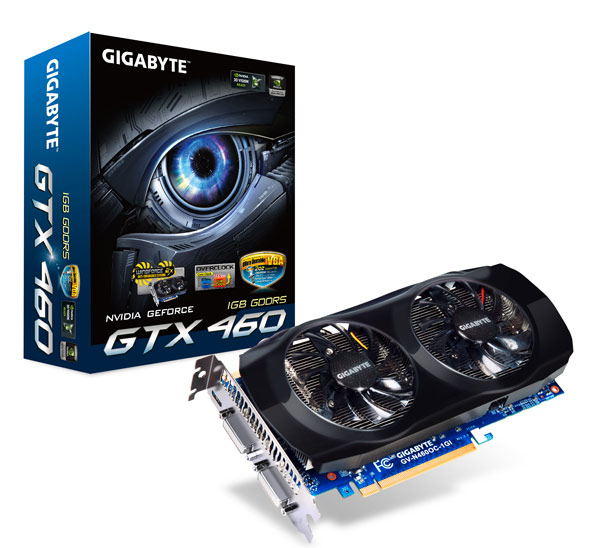
Inno3D
gtx460_768M
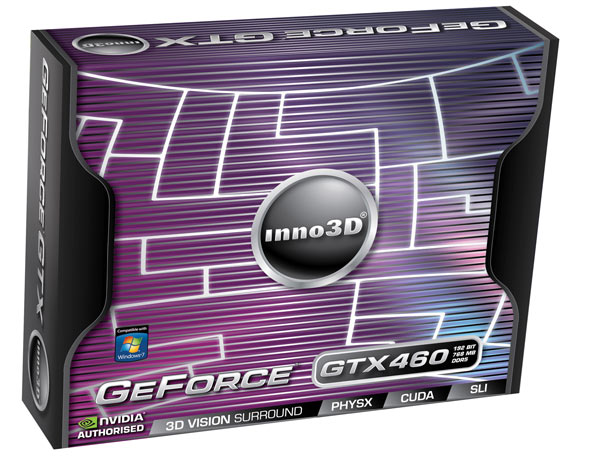
Jetway
Jetway GTX 460

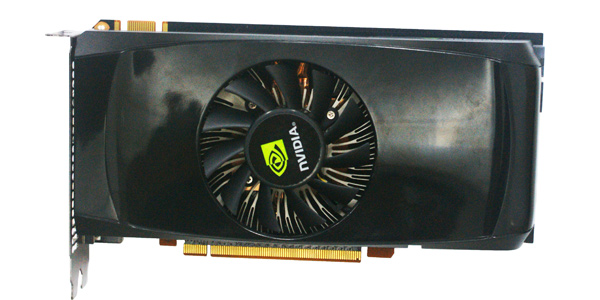
MSI
N460GTX-CYCLONE-1GD5(G57-V100699)
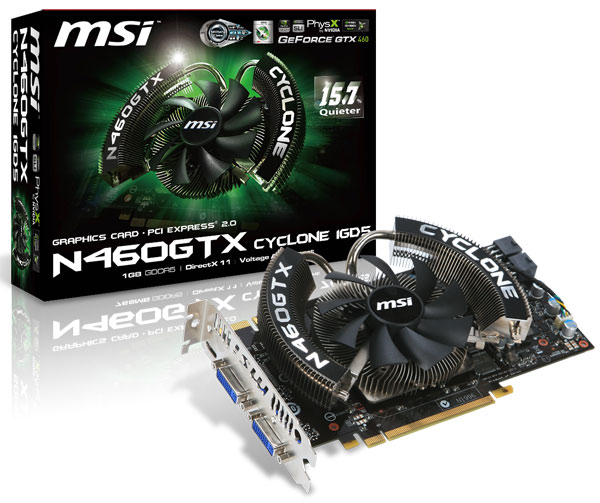
N460GTX-CYCLONE-768D5-OC(G57-V100698)
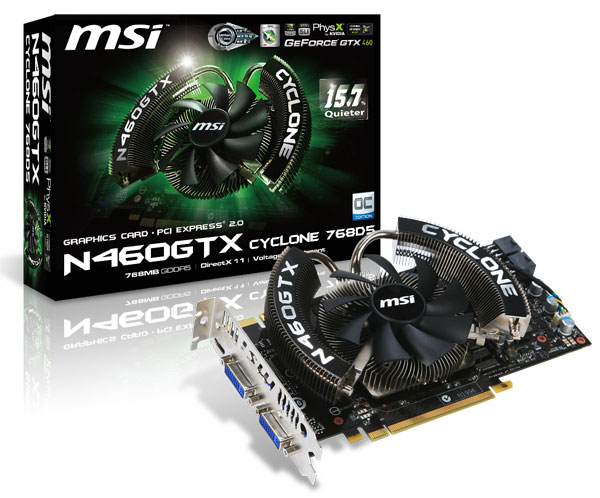
Palit
Palit_GTX460_768M
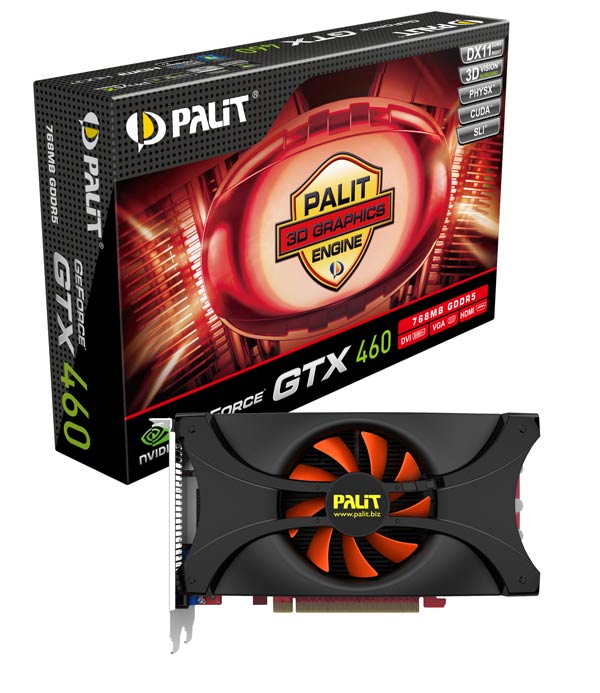
Palit_GTX460-SONIC
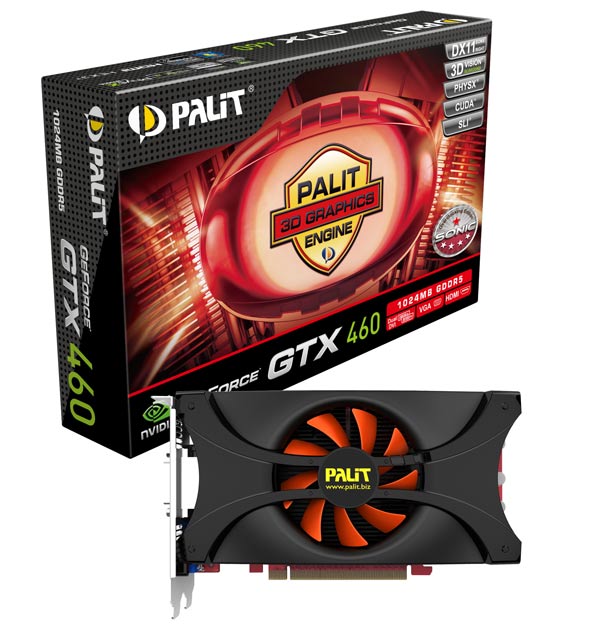
Palit_GTX460_SONIC_PLATINUM_1GB
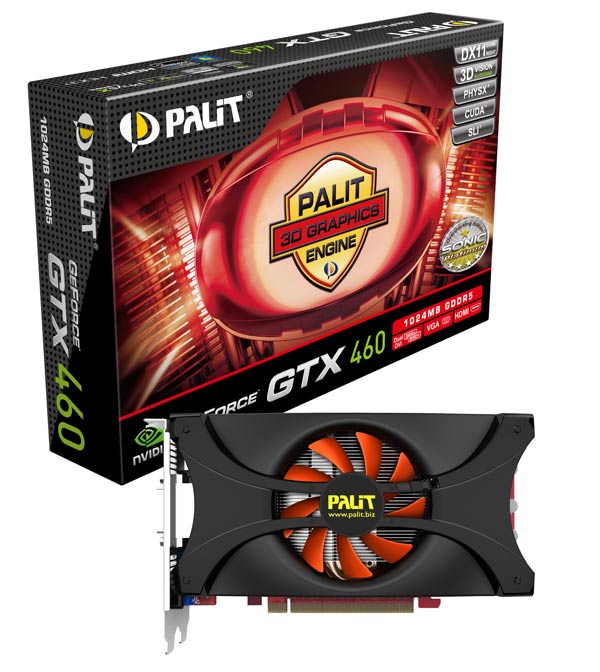
Poin Of View
GTX460-768MB-VGA-460-A1-768
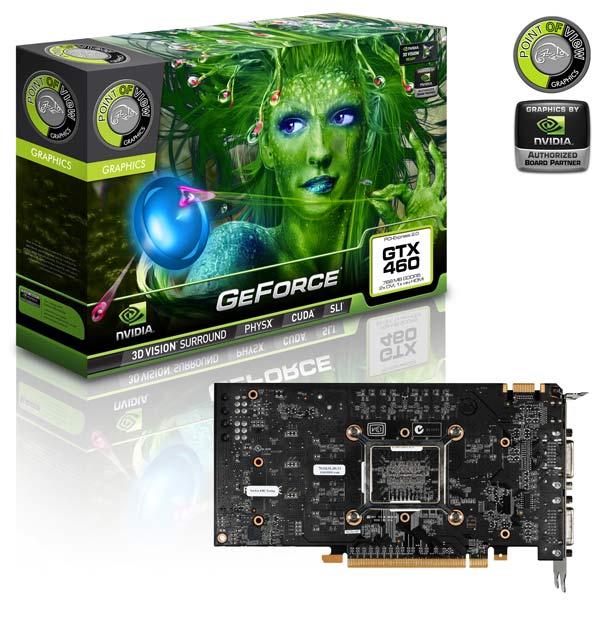
Sparkle
GTX460_768MB
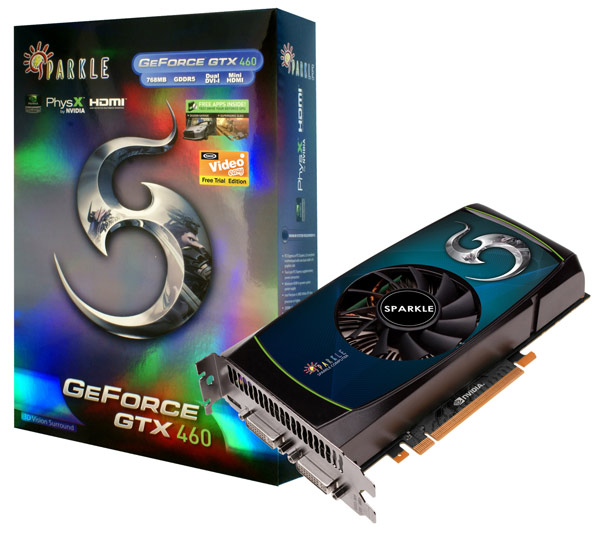
GTX460_1024MB
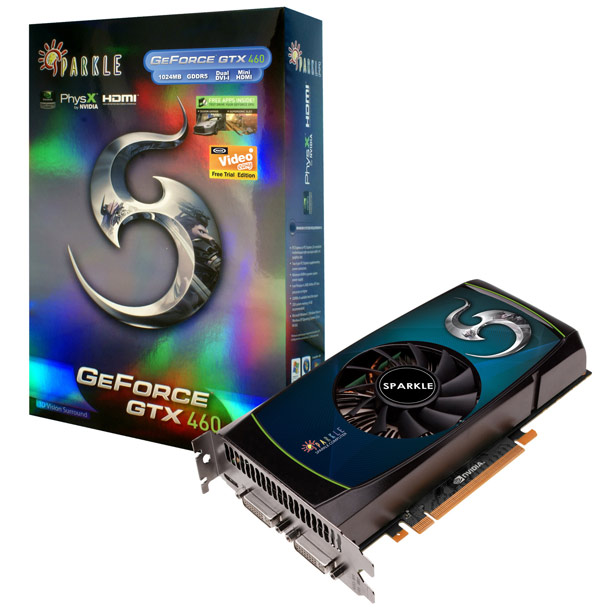
Zotac
ZOTAC_GF_GTX460_768MB
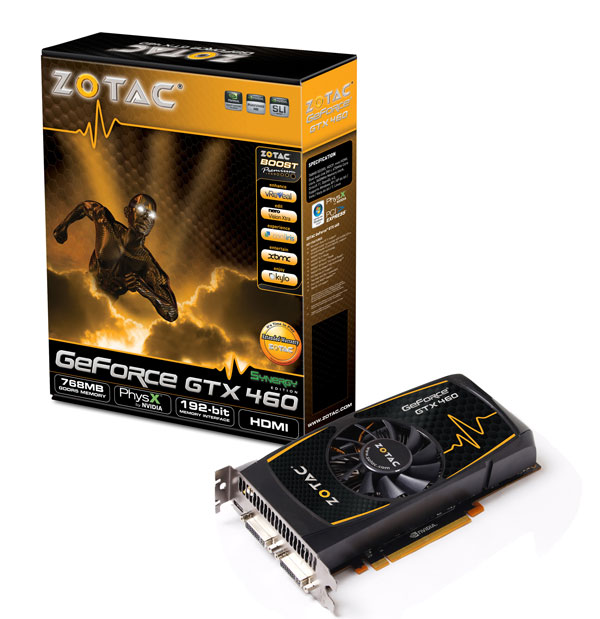
ZOTAC_GF_GTX460_1GB
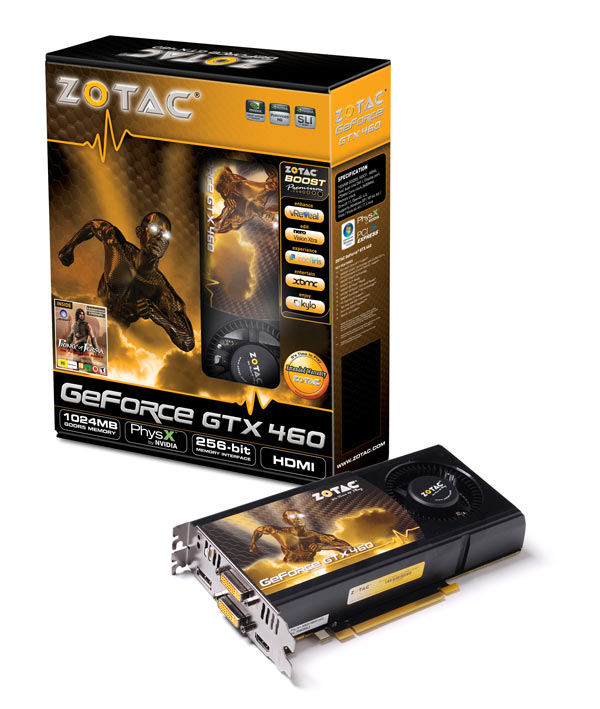
Apart from the clocks, EVGA didn't change a thing on the GTX 460. So, the GTX 460 is a dual-slot card measuring 210mm in length (8.25in), 111.15mm in width (4.376in) and weighing in at 2lbs.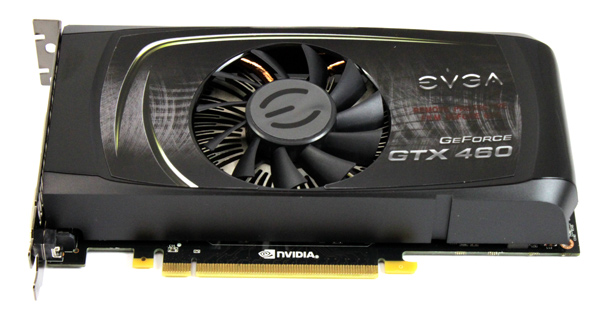
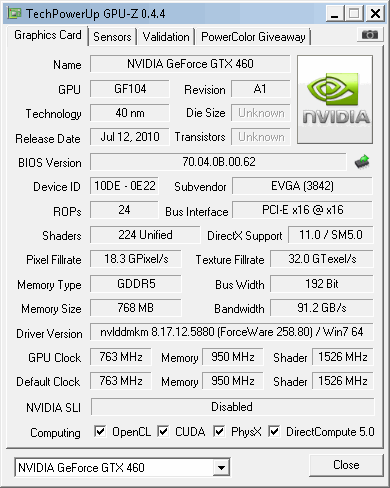
The cooler comes with a copper-base, two heatpipes and a large aluminum heat-dissipating surface. The fan is placed in the center and the plastic hood is designed with maximum air supply to the fan in mind.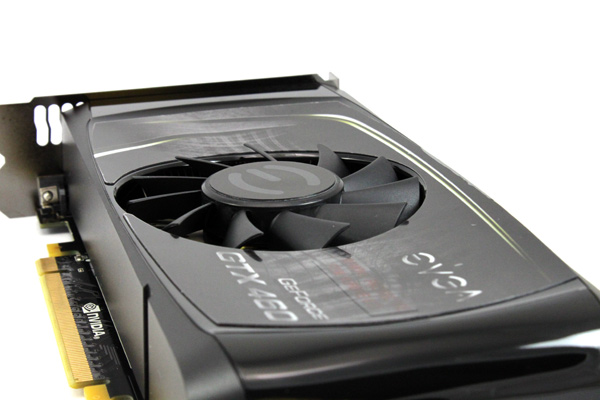
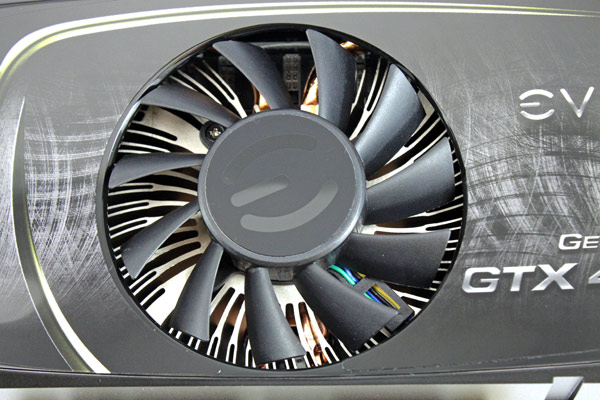
The card is powered via two 6-pin power connectors.
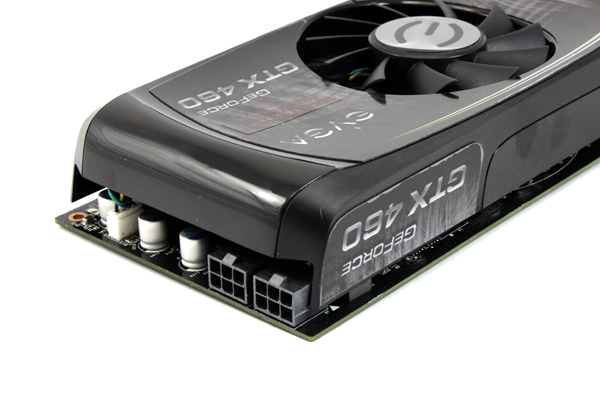
With its GTX 460 cards, EVGA provides an HDMI cable with mini-HDMI connector, which is a nice gesture as most users (especially non-Nvidians) aren’t familiar with mini-HDMI. For overclocking and monitoring, we’d recommend EVGA’s Precision utility which is free and can be downloaded from EVGA’s site.
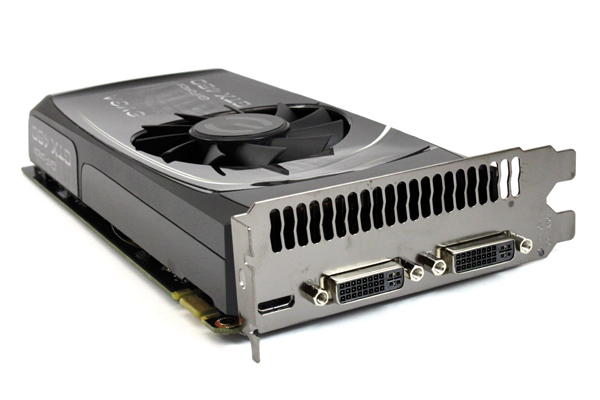
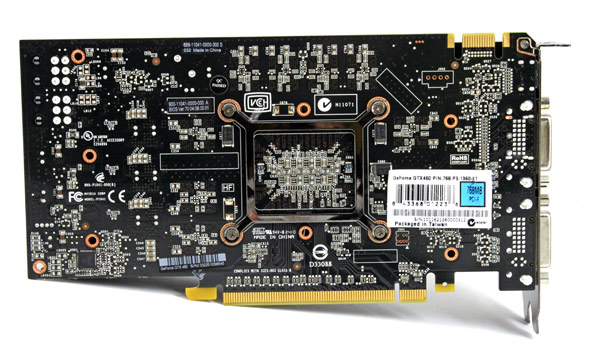
With its GTX 460 cards, EVGA provides an HDMI cable with mini-HDMI connector, which is a nice gesture as most users (especially non-Nvidians) aren’t familiar with mini-HDMI. For overclocking and monitoring, we’d recommend EVGA’s Precision utility which is free and can be downloaded from EVGA’s site.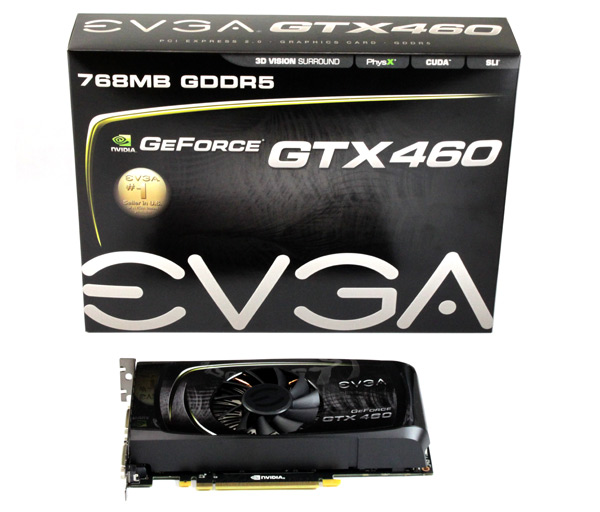
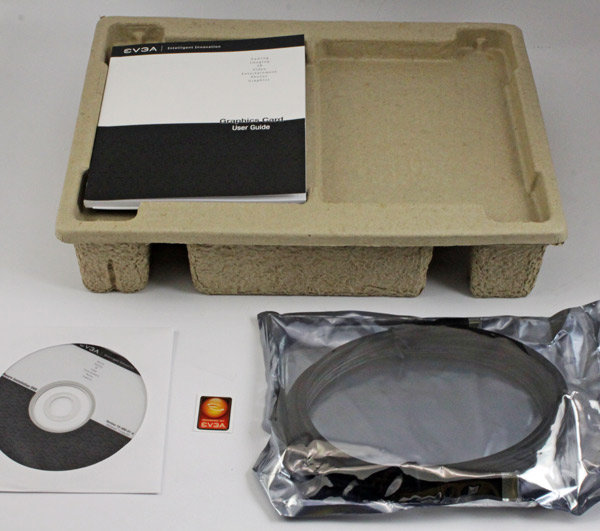
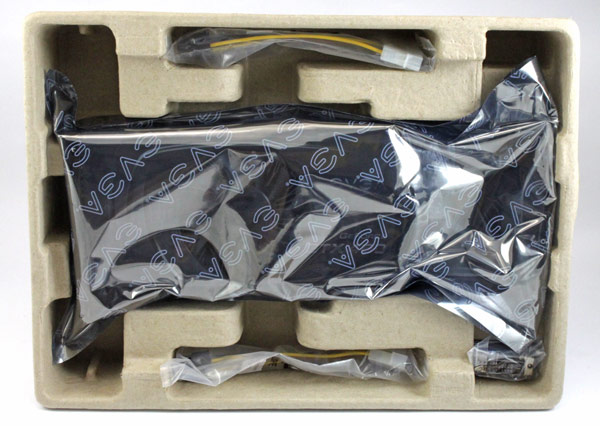
Testbed:
Motherboard: EVGA 4xSLI
CPU: Core i7 965 XE (Intel EIST and Vdrop enabled)
Memory: 6GB Corsair Dominator 12800 7-7-7-24
Harddisk: OCZ Vertex 2 100 GB
Power Supply: CoolerMaster Silent Pro Gold 800W
Case: CoolerMaster HAF X
Fan Controler: Kaze Master Pro 5.25"
Operating System: Win7 64-bit
258.80_desktop_win7_winvista_64bit_english
10.6 CCC
EVGA’s GTX 460 768 MB Superclocked outruns both the GTX 465 768 MB and HD 5830 in Vantage tests. We see that overclocking gave EVGA Superclocked a helping hand and it beats the HD 5830 by more than 11%.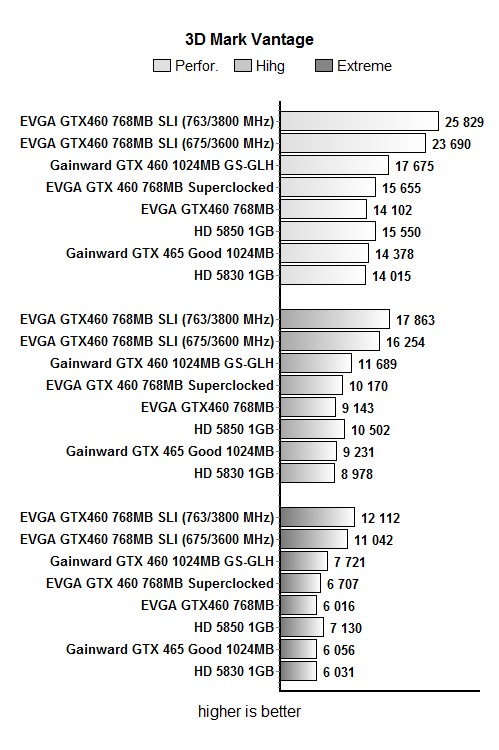
At 1920x1200 in Dirt 2, EVGA Superclocked outruns the HD 5830 by about 30% and the GTX 465 by more than 10%.

Metro 2033 confirms that EVGA GTX 460 767MB Superclocked is one mean machine that even the GTX 465 can’t beat. Here we see results equal to those scored by the GTX 465, and the HD 5830 is slower by about 4.2% at high settings.
In the first Metro 2033 test, we made it easier on the cards by turning Advanced DOF (depth of field) in DirectX 11 settings. Tesselation is on in both tests with the difference being in general settings – the first test is done at Normal settings and the second at High. As you can see, when the complexity of effects is lowered, we get a playable framerate with all our tested cards.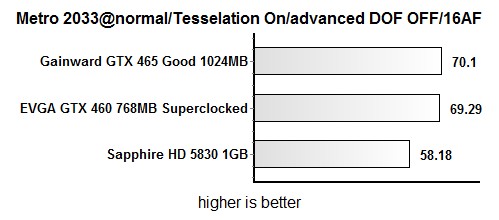
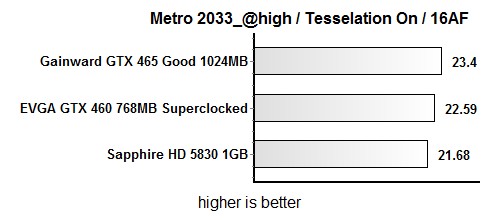
EVGA GTX 460 768MB Superclocked makes a nice headstart by beating the HD 5830 by 18% (with antialiasing), but the HD 5830 takes over after we turned antialiasing on. GTX 460 Superclocked is once again on par with the GTX 465.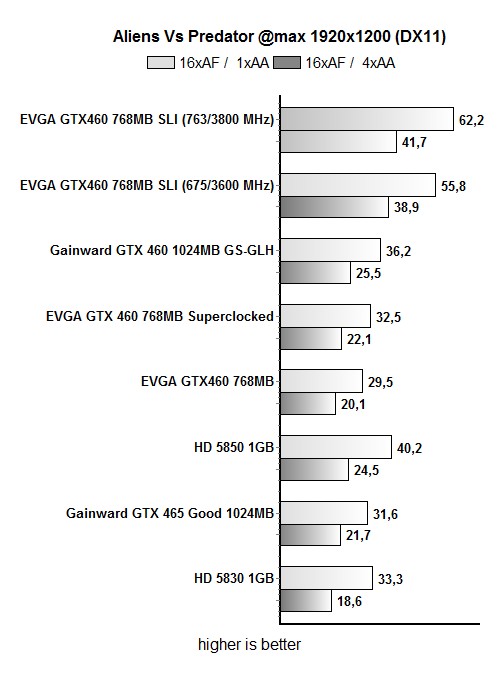
FurMark results didn’t come as a surprise as EVGA GTX 460 768MB Superclocked, thanks to its clocks, beats the HD 5830 and outruns or runs on par with the GTX 465 in most of our tests.
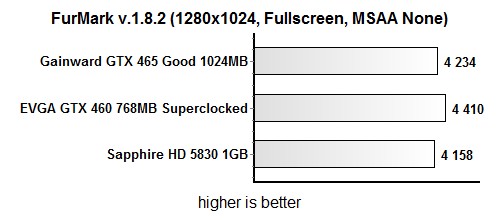
Unigine Heaven is a DirectX 11 test which puts an emphasis on tessellation and leaves it up to the user to define the level of tessellation. We chose Normal mode which is less stressful than the Extreme mode, but mid-range cards still have difficulties in completing the tests.

Geforce GTX 460 will surely be a hit with overclockers. So far, Fermi cards haven’t quite excelled in overclocking and it seems that the slower the card – the better it overclocks. Up ‘till now, the GTX 465 (GF100) was the only model which managed to hit 800MHz with air cooling. GF104 based cards, on the other hand, show some serious promise and the fact that many partners had overclocked cards on day one speaks for itself. In fact, some of the aforementioned cards run at 800MHz, which is 150MHz higher than reference.
Geforce GTX 460 je nova hit kartica za poklonike overclockinga. FERMI kartice ina?e nisu prijateljski nastojene overclockingu, a izgleda da što je slabija kartica to se bolje overclocka. Do sada je GTX 465 (GF100) bio jedini model na kojem smo sa zra?nim hladnjakom postigli 800MHz za GPU. Da je GF104 stabilniji i OC prijateljski govori ?injenica da su se mnogi partneri ve? na dan predstavljanja kartice odlu?ili da izbace na tržište tvorni?ki overclockane modele, od kojih pojedini rade na ?ak 800MHz, što je 150MHz više u pore?enju sa referetnom brzinom od 650MHz.
EVGA GTX 460 Superclocked – overclocking with the help of Precision utility
EVGA GTX 460 Superclocked’s reference clocks are 763MHz for the GPU (shaders run at twice the speed) and the memory at 3800MHz (effectively). GTX 460 Superclocked is already available on the market and comes clocked 88MHz higher than on the reference GTX 460, which is a respectable factory overclock.
We had help from EVGA’s Precision v1.9.5 in our overclocking, and this latest version of the utility supports GTX 460. Using this small and simple utility makes monitoring and setting fan speed a breeze.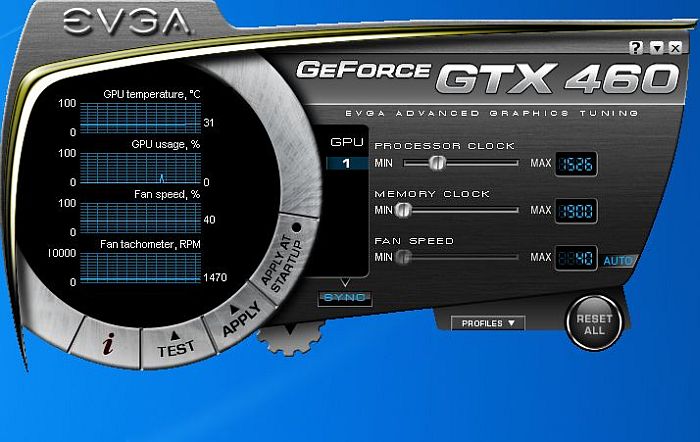
The latest, v1.9.5 utility also displays fan tachometer, where we find that minimum RPM is 1500 RPM or 40% RPM, whereas the maximum RPM is at 2900 RPM or 70% RPM. EVGA Precision no longer uses static slider limits calibration and adjusts the limits dynamically when some external factors affect it (e.g. when minimum fan speed is limited by NVIDIA driver), which is the reason why we couldn’t push the fan above 70% RPM.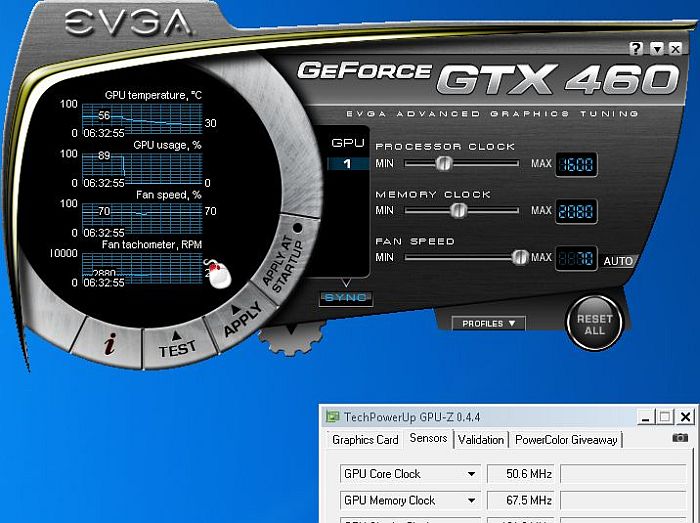
Minimum temperature on the GTX 460 Superclocked was 30°C and maximum temperature hit 66°C with AUTO fan regulation. These are excellent results, and are even more impressive considering that the cooler is almost inaudible in 3D.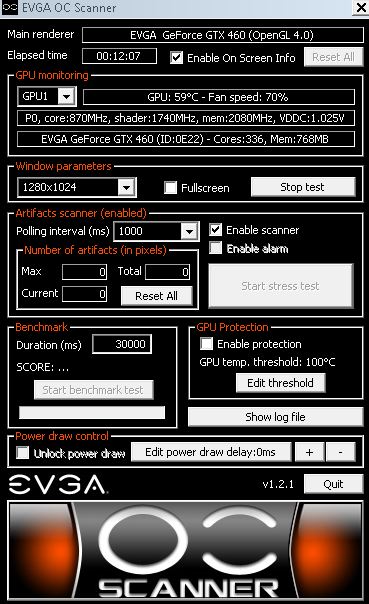
We had to increase fan RPM for our overclocking so we set it to 70% RPM, where temperatures hit about 59°C. This proves that the GTX 460’s cooling packs enough potential to cool the card in pretty much any scenario.
870MHz for the GPU and 4160MHz (effectively) are excellent results, and Nvidia finally has an affordable card that has serious overclocking potential.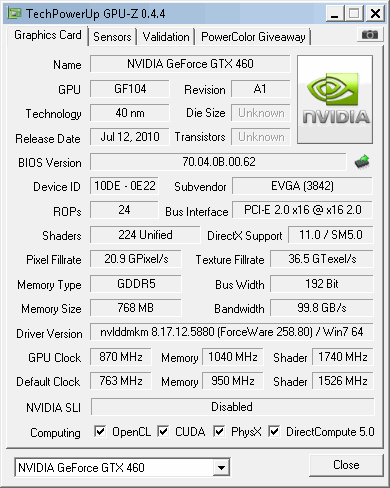
Our test rig equipped with the GTX 460 768MB consumed about 139W, whereas the same setup with an HD 5830 drew 146W. During FurMark testing, our system drew 299W and 314W, respectively. After we overclocked EVGA’s GTX 460 768MB to 870MHz, entire rig consumption increased to 324W.
Conclusion
So, Nvidia finally launched its new graphics card dubbed the GTX 460 and aimed it at the more price-aware market segment. GTX 460 cards are available for less than €200 for the 768MB GDDR5 model whereas the 1024MB GDDR5 models are priced around the €230 mark.
The GTX 460 is currently Nvidia’s most affordable DirectX 11 card with good performance, quiet cooling and a great overclocking potential. The card will easily go over 800MHz reaching and hitting as high as 850MHz is no problem. Saying this, lower-budget gamers will love this card because it’s capable of gaming at 1920x1200 even without overclocking. The only downside to this card is the competition – AMD’s HD 5830 sells at about €170 and offers similar gaming performance.
EVGA GTX 460 Superclocked 768MB GDDR5 is a factory overclocked card where the GPU runs at 763MHz, CUDA cores at 1526MHz and the memory at 3800MHz (effectively). Apart from the 13% factory GPU overclock, we managed to push the card to 870MHz (reference clock is 675MHz), which is a 29% overclock – not too shabby, we’d say.
Although EVGA’s GTX 460 Superclocked card uses reference cooling, we must admit that for once we didn’t wish for non-reference cooling solution – this is one of the best reference solutions we’ve seen. Operating temperatures hit only 66°C, where the cooler remained really quiet throughout our testing. Idle consumption is low and it doesn’t get much higher in 3D either, so the EVGA GTX 460 will be a great card for those who really like to take control of their rig’s consumption.
EVGA currently offers four cards: 768MB standard clocked for €209.90, 768MB Superclocked for €225, 1GB standard clocked for €239 and the 1GB Superclocked for €255. Although EVGA’s prices are higher than the most affordable GTX 460 cards, excellent customer support and constant updates on various graphics card related tools are reasons enough to consider paying a bit extra. Furthermore, our today’s card managed to outrun the much pricier Geforce GTX 465 on couple of occasions, which really drives our point even further.
If you’re an Nvidian, and you’ve been waiting on Geforce DirectX 11 gaming card price-cuts – then today is your day. EVGA GTX 460 Superclocked offers excellent overclocking potential without stressing your cooler and adding noise, but you won’t make a mistake if you choose the reference model either, as it too can easily be overclocked to at least 800MHz.